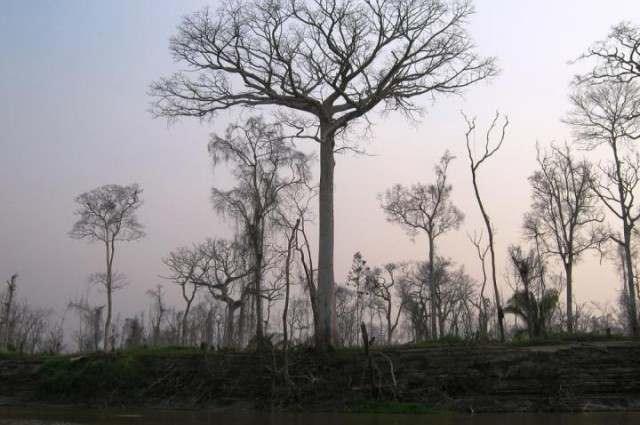Within one of the largest renewable energy deals that was made by a non-utility business, your Internet searches and cat videos soon could be carbon neutral as Google just announced that it increased the quantity of green energy powering its buildings and data centers. The move, which besides the renewable energy the business already uses was likened to taking a million vehicles off of the road, is an additional measure toward the Web giant’s objective of being 100% green by the year 2025.
Read MoreCategory: Environment

Next 2 weeks decides fate of earth
This week the globe will witness as nations collect inside France for crunch climate discussions. Referred to as COP21, or the Twenty-first Conference of the Parties to the United Nations Framework Convention upon Climate Change, lots has been made of the meeting. However, what are the talks exactly, and what are they attempting to accomplish?
The scientific consensus is that all of us should restrict global temperatures to under 3.2°F of warming beyond pre-industrial levels. Earlier in 2015 witnessed temperatures that were past the 1.8°F mark, and edged us nearer to the verge. To place the brakes on this, the globe must slash its greenhouse gas emissions. In order to do this, a contract on the degree of those slashes for every nation are going to need to be accomplished, with every nation signing for it in order to be ratified.
Various states will have various targets, with most of the largest emitters already having made dedications. For example, the European Union will decrease emissions by 40% as compared with 1990 levels by 2030; the United States agreed to slash theirs by 26 – 28% as compared with 2005 levels by 2025. Currently, China, the biggest greenhouse gas emitter, agreed that their emissions are going to peak by 2030, though most believe that it’ll happen earlier than this.
It’s a daunting task: In order to get 196 nations to concur on a legally binding dedication to restrict greenhouse gas emissions is like attempting to herd cats.

Over 50% of world’s primates on the endangered species list
Over 50% the world’s primates, which includes monkeys, lemurs and apes are faced with extinction, international professionals warned last Tuesday.
This population crunch includes the consequence of massive scale habitat destruction – especially the clearing and burning of forests – and hunting of primates for food, as well as illegal wildlife trade.
The species that were long known to be at risk, which includes Sumatran orangutan, were joined upon the most endangered listing for the initial time by Philippine tarsier as well as, from Madagascar, the Lavasoa dwarf lemur, researchers that met in Singapore stated.
According to director of conservation at Britain’s Bristol Zoological Society and leading primatologist, Christoph Schwitzer, ‘These studies highlight the extent of the danger that faces most of the globe’s primates.’
It’ll include Lavasoa dwarf lemur – species just found 2 years before – as well as Roloway monkey from Ivory Coast and Ghana that, according to experts, ‘are on the brink of extinction’.
According to the statement, ‘In the world, there will include 703 primate sub-species and species. Vietnam and Madagascar house the massive figures of extremely threatened species.’
The statement added that red colobus monkey, in Africa, was underneath specific risk, as were a few of South America’s spider monkeys and howler monkeys. The statement also mentioned that ‘All those species are conspicuous and fairly large, making them primary targets for bush meat hunting.
Chair of the species survival commission of the IUCN, Russell Mittermeier, stated he hoped this report might urge governments to dedicate to ‘desperately necessary measures for biodiversity conservation’.

Extinction faces over 50% of tree’s in Amazon
Deforestation around the Amazon isn’t something new: All throughout a lot of history, farmers have been clearing out patches to raise livestock and grow crops. However, that was on a smaller scale than these days. Over the last couple of decades, over 289,000 square miles have been cut, mainly to make way for soybean production and cattle.
While all of us know the results at the ecosystem level, like habitat loss and climate alteration, less is known concerning how deforestation has affected plant and animal populations throughout human history, and what may occur in the future. It’ll mean that the conservation status of the 15,000 tree species residing in this region, amongst the most diverse plant hotspots within the globe, remains unknown.
Using information from IUCNs (International Union for Conservation of Nature) Red List of Threatened Species, writers concluded that 36 – 57% of the Amazon’s species of trees likely would fall under the classification of threatened with extinction. Those figures reflect different scenarios scientists looked at for the year 2050: “optimistic” and “pessimistic.”
Also, they discovered that their trends aren’t restricted to the Amazon and may be applied to additional forests around the world, implying that most of the globe’s 40,000 tree species potentially share the exact same status. With the International Union for Conservation of Nature threshold for being eligible as threatened sitting at a loss of 30% Pitman explained that it’d mean that both Asia that has lost around 35% over the last 150 years, as well as Africa that has lost 55%, also would fall under the exact same category.
